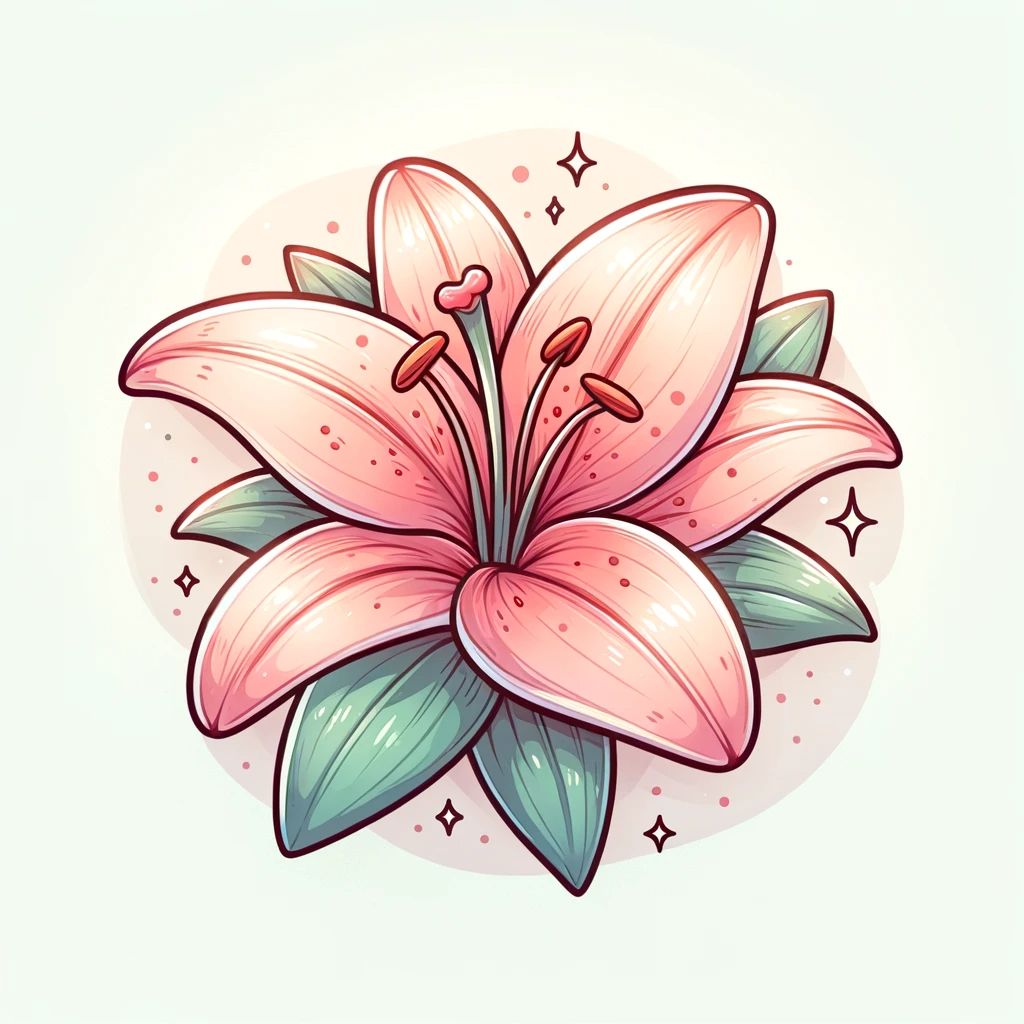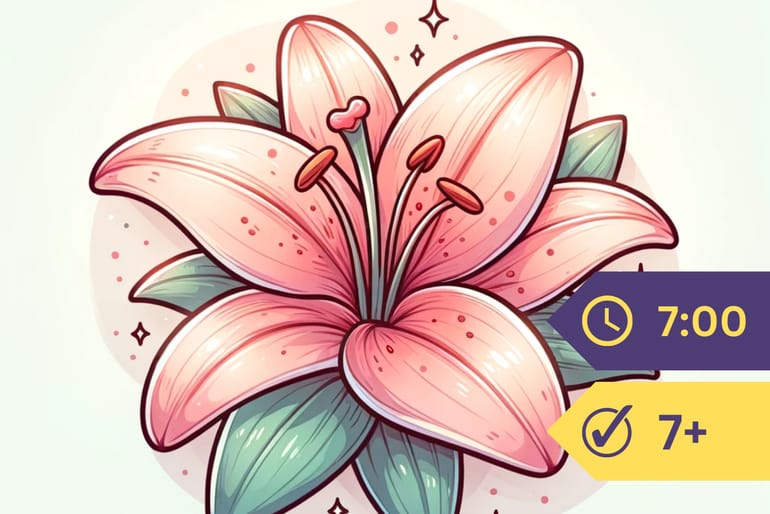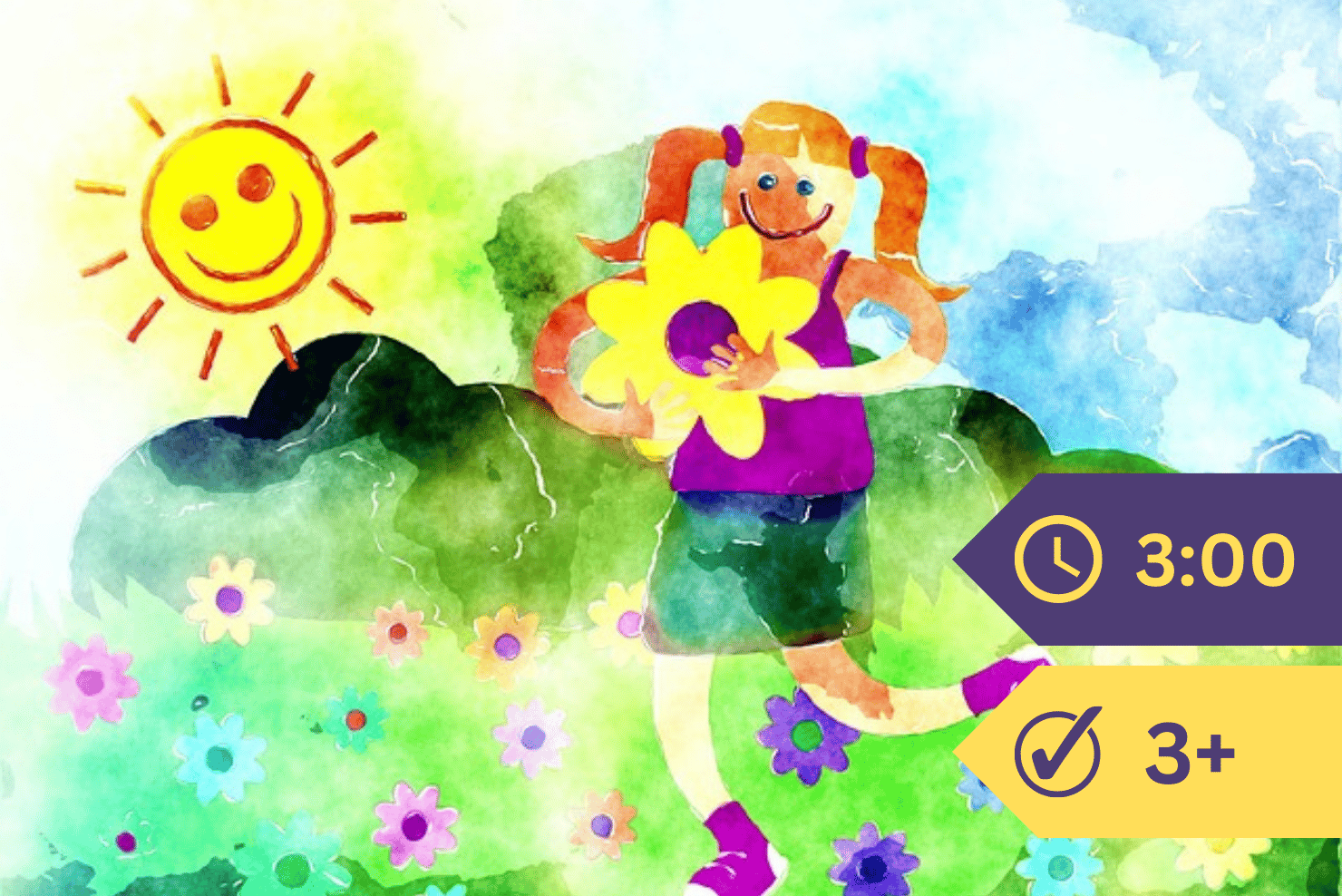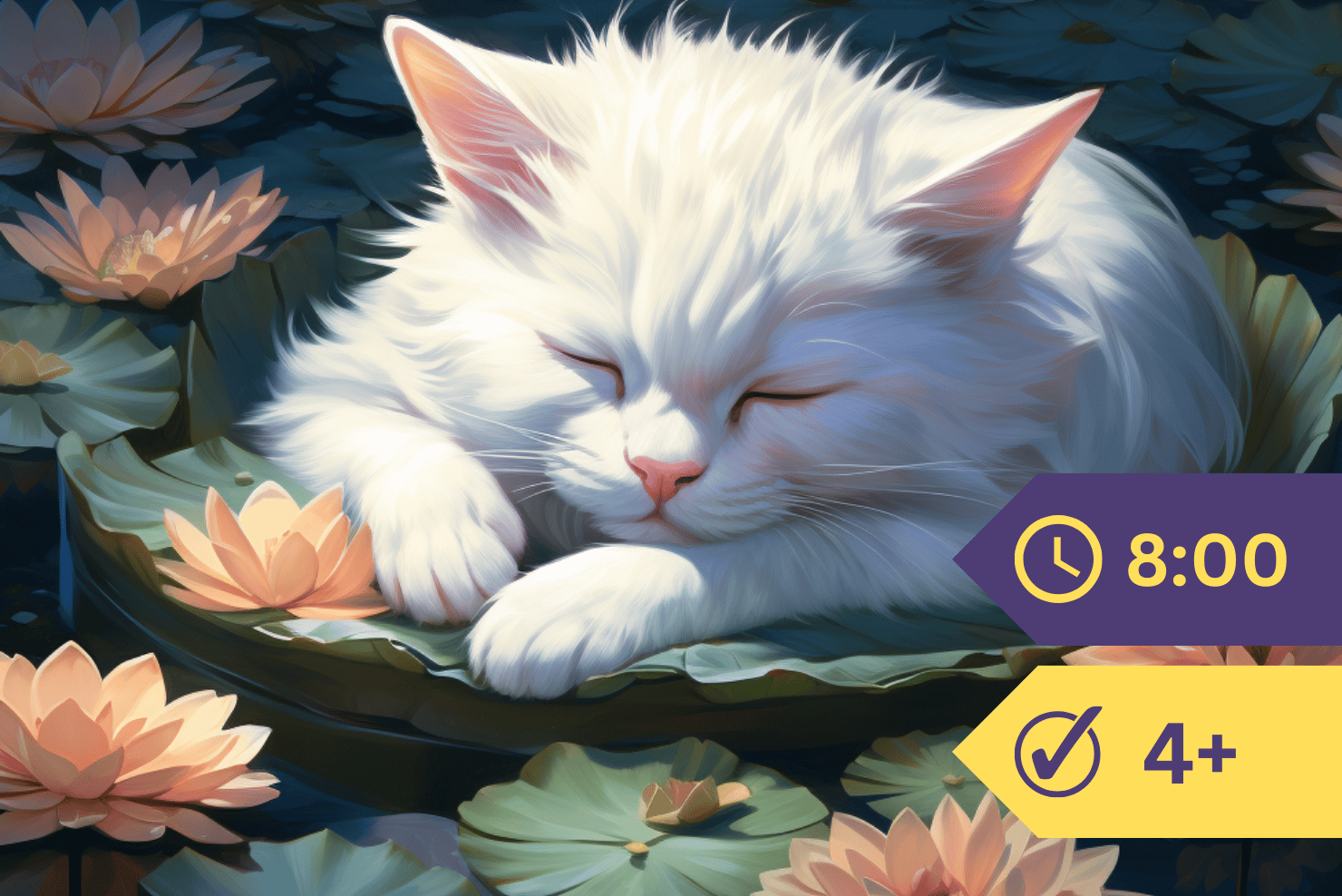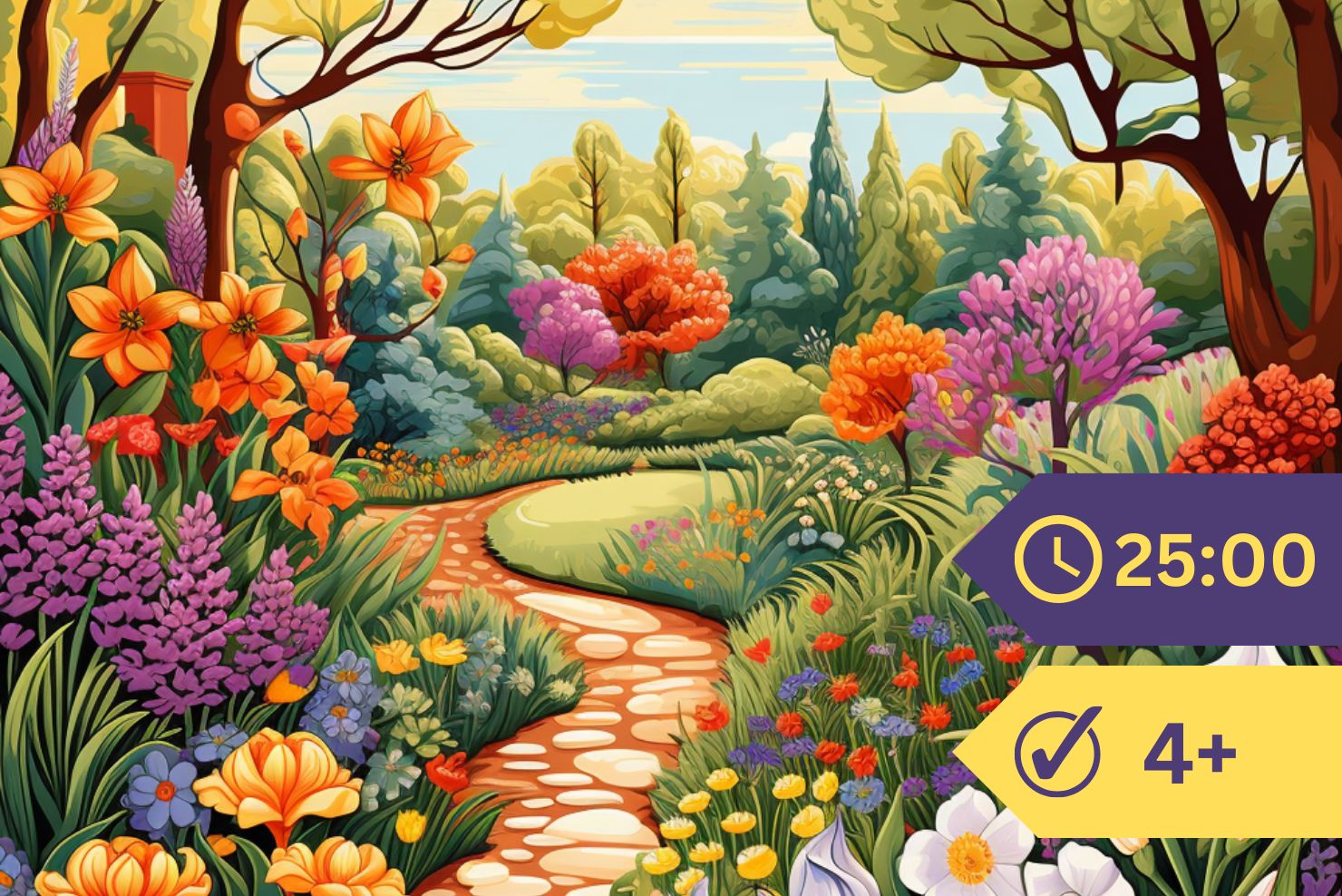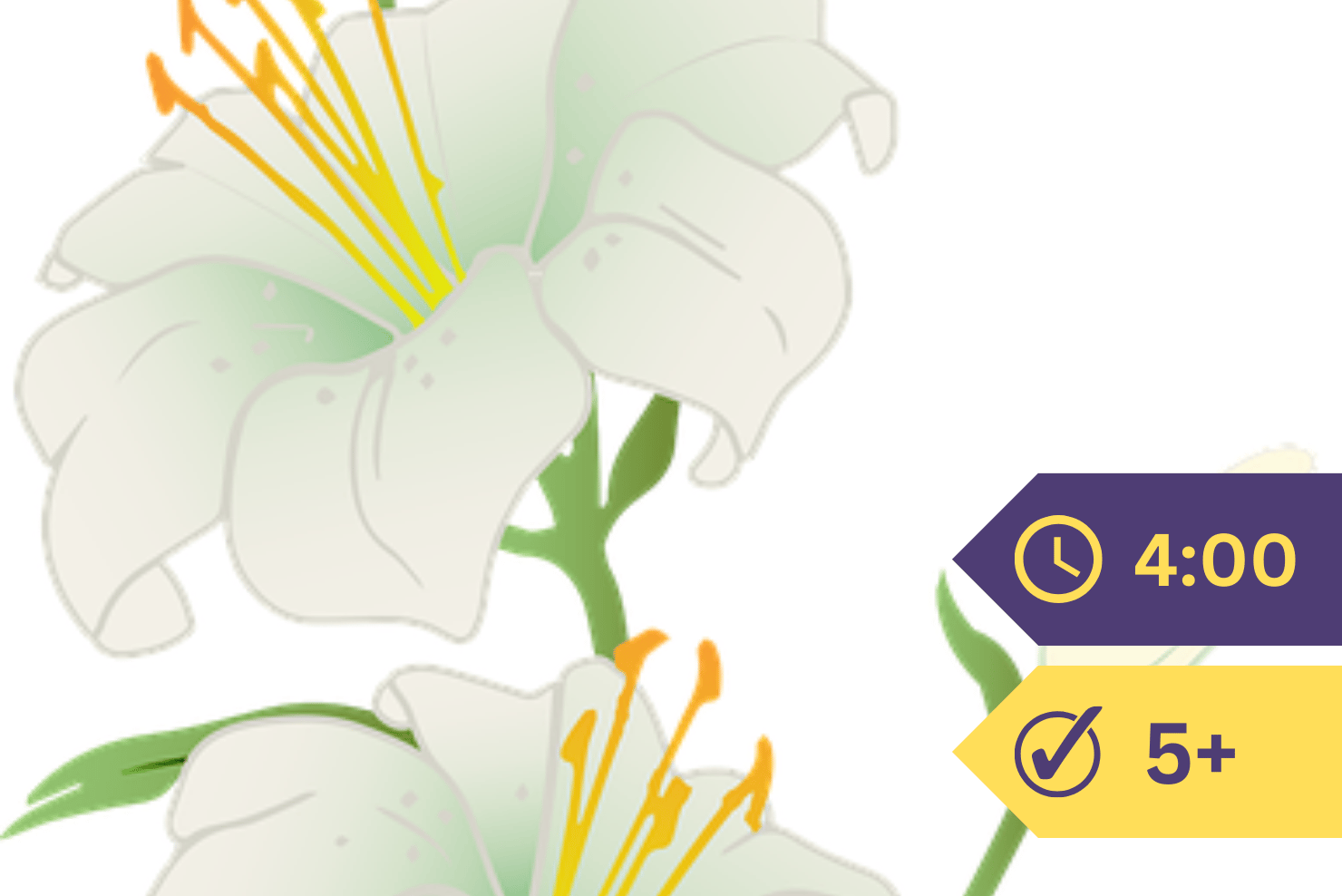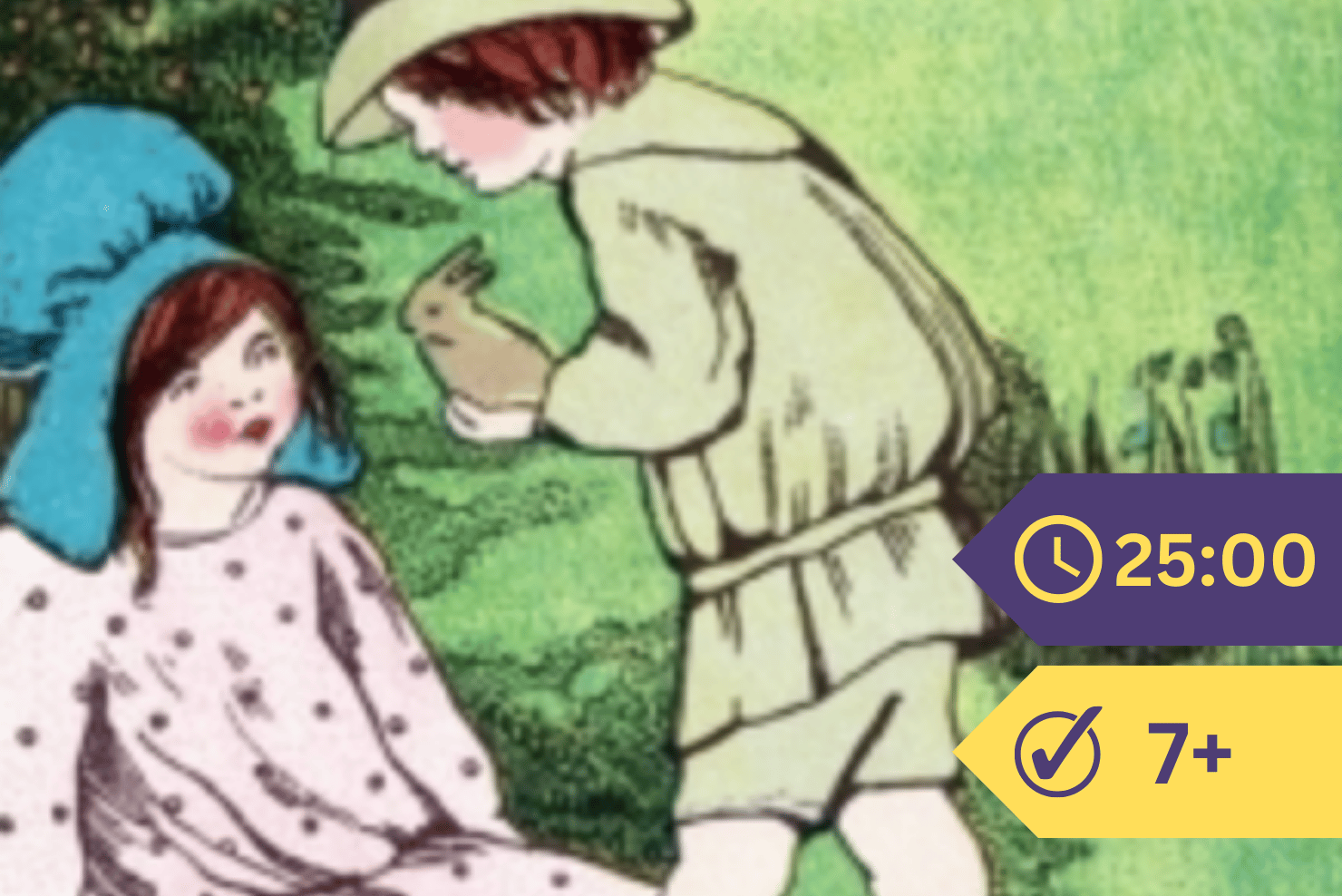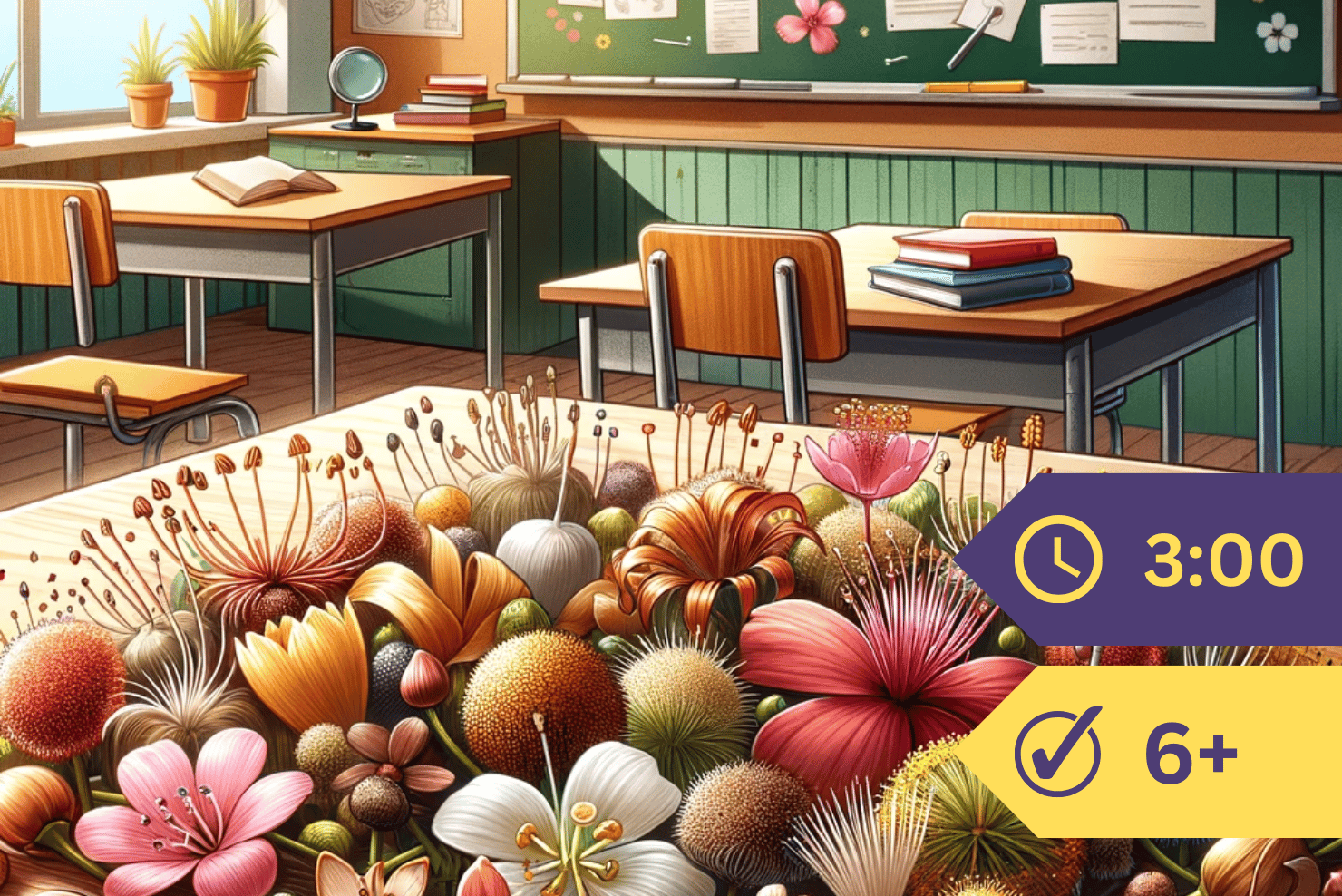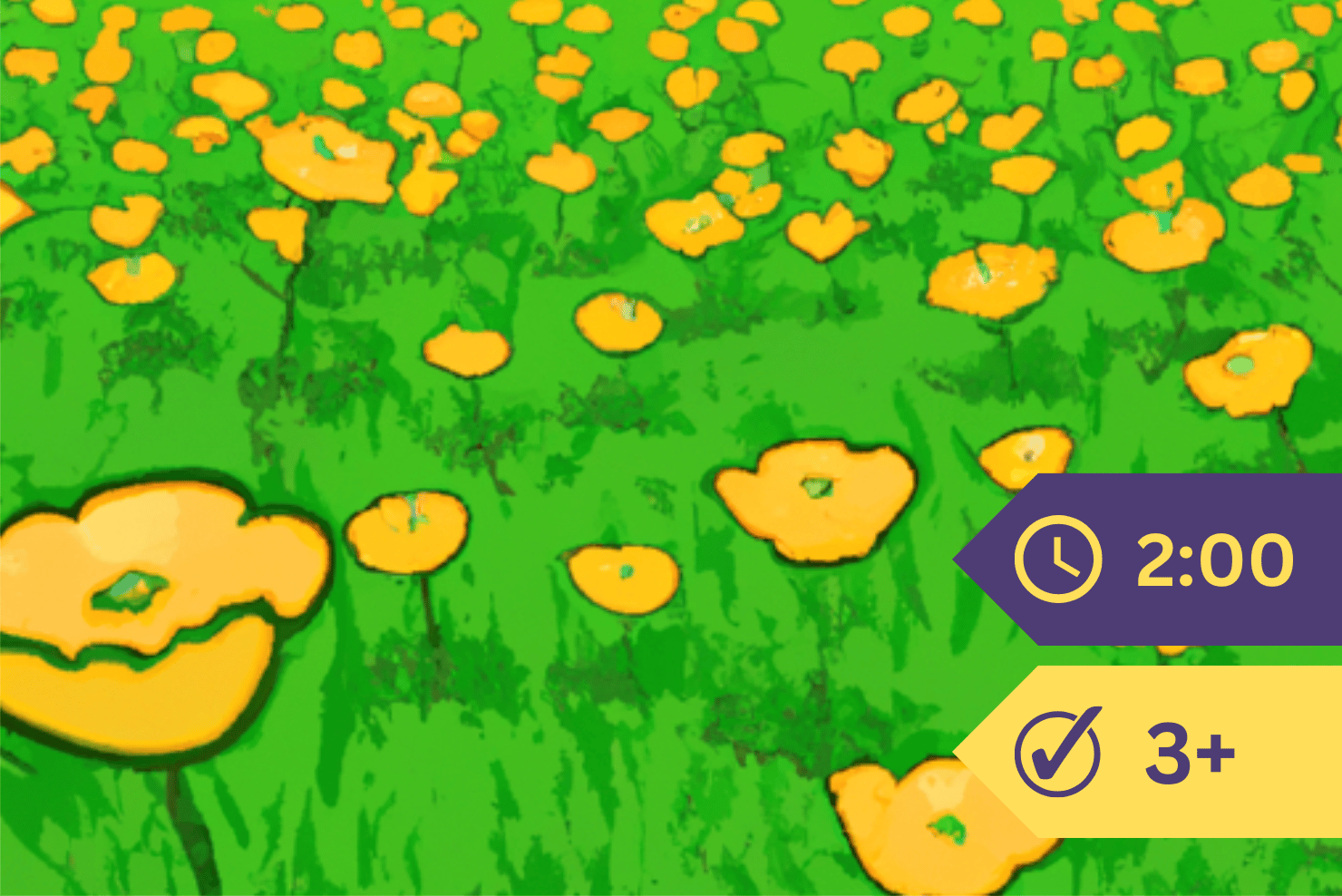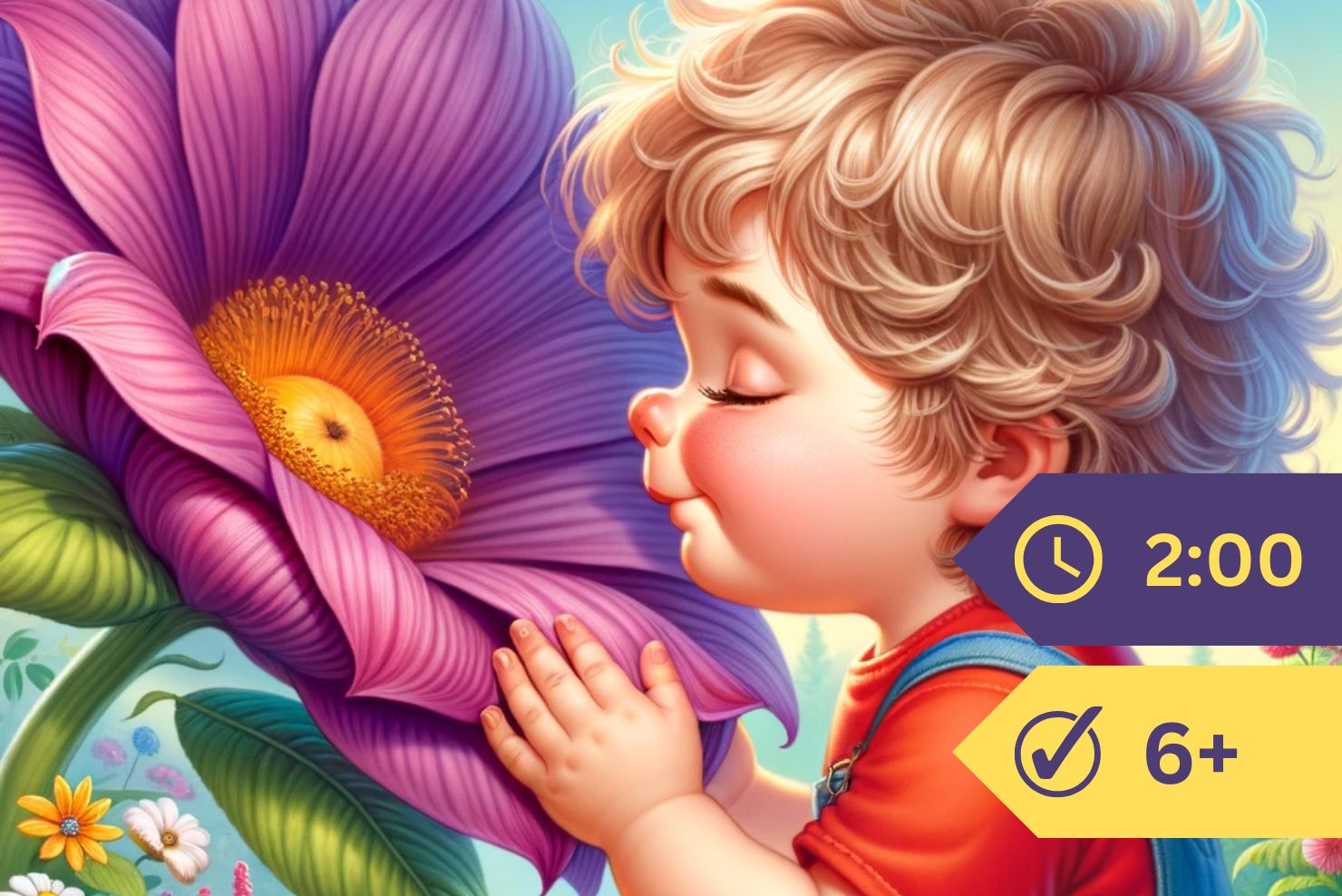But first you must know a little something about the pistil, if I am really to make clear to you how the flower dust helps the flower to change into fruit.
This picture shows you the pistil of the lily. At the foot of this pistil, you remember, is the box which holds the lily’s seeds.

The top of the lily’s pistil is quite large and somewhat flat. It is almost as sticky as if it had received a dab of glue.
This flat top dwindles below into a stalk, which grows larger again at its lower end.
Now take a sharp knife and cut open lengthwise this pistil.
The lower, thicker part, seen through a magnifying glass, looks like the picture below. You see a great many baby seeds fastened to a central wall. Each one of these seeds holds a speck of the wonderful material without which there is no life. But this speck of life has not the power to make the seed grow into a plant. To do this, the seed must have some outside help; and this help can come only from a grain of flower dust.

Perhaps you wonder how a dust grain brushed on the pistil’s flat top can ever reach the baby seeds hidden away in the seedbox.
I could not tell you to-day how this is done were it not for those wise and patient men and women who have spent days and weeks and months, and even years, in watching and studying the ways of plants.
But first let me ask you a question.
What happens when a healthy seed falls on moist ground?
Why, it seems to take in the moisture, and to thrive upon it. It swells up, and at last it bursts open, and it sends a root down into the earth.
Now, something not altogether unlike this happens when a lily dust grain falls upon the moist tip of a lily pistil. The dust grain sucks in the moisture. It grows bigger and bigger. The outer skin becomes too small for the swelling contents. At last it bursts open, letting out a little tube.
This little tube works its way down through the stalk of the pistil, almost as a root pushes down into the earth, and at last it reaches one of the seeds in the seedbox below.
And into this tiny seed the little tube pushes its way.

The tube has carried with it that speck of wonderful living material which every dust grain holds. And when this living speck has been added to that which the seed already holds, a great change begins to come about.
This new touch of life, added to that already present, gives the lily seed the power to grow into a lily plant.
The other dust grains that were brushed upon the flat top of the lily’s pistil act in just the same way. Apparently without difficulty the different tubes find their way to the different seeds, till at last each one has received the fresh touch of life without which it cannot grow into a lily plant.
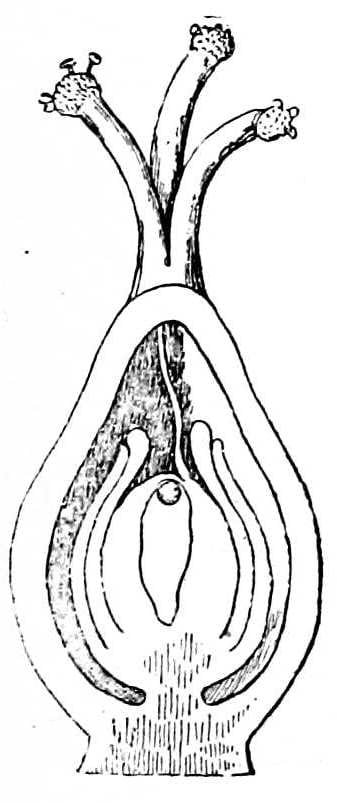
I cannot show a lily dust grain in the act of sending out its life-bearing tube; but above is a dust grain from the thorn apple. You see that it has burst open, and that a tube is pushing its way out.
This picture is that of a pistil seedbox cut open, showing you a tube that is working its way from the dust grain above to a tiny seed in the seedbox below.

As I told you in the last chapter, the name “pollen” has been given to this wonder-working flower dust. A grain of flower dust is a grain of pollen.
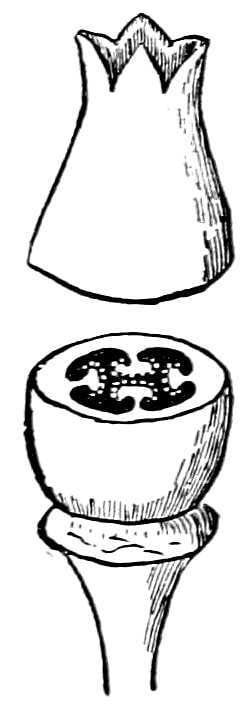
In many flowers you will find a pistil much like the one that you see in the lily.
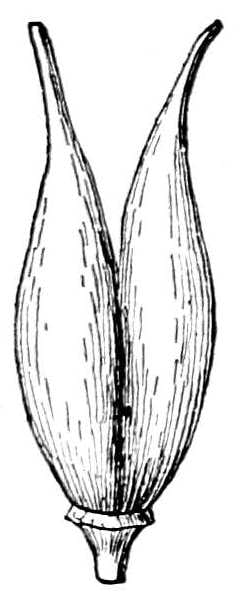
But there are as many different kinds of pistils as there are different kinds of stamens.
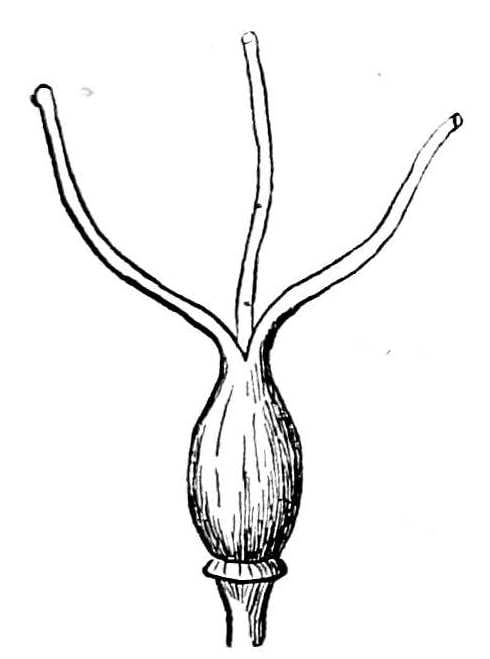
This pistil is from the grass of Parnassus, that pretty white flower which you find in the wet meadows in August and September. It has no real stalk, you see, like that of the lily; but it is quite thick all the way from top to bottom. In the picture below it is cut across, showing the seeds inside.
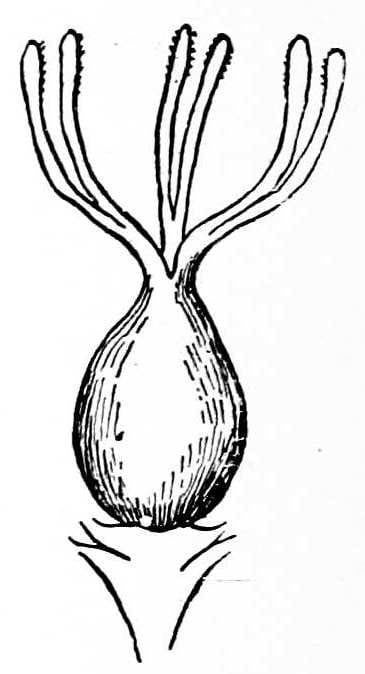
Many pistils that are joined in one piece below, where the seeds are held, separate above into two or more parts. The picture below shows the seed holder of a saxifrage, divided into two pieces above; the picture below gives that of the Saint John’s-wort, separating into three parts; that of the sundew separates into six parts. The picture below is a section of the pea flower. This is cut lengthwise so as to show you the seeds which line the inner surface of the pistil. Here you have the baby pea pod.

All these flowers have only one real pistil,—one pistil which may persuade you, by the way in which it separates above, into thinking that there are more than one. So you must be on your guard in this respect, and remember that flowers have a way of playing tricks with all but the most wide-awake of boys and girls. Look long and carefully before you declare that a flower has only one pistil.
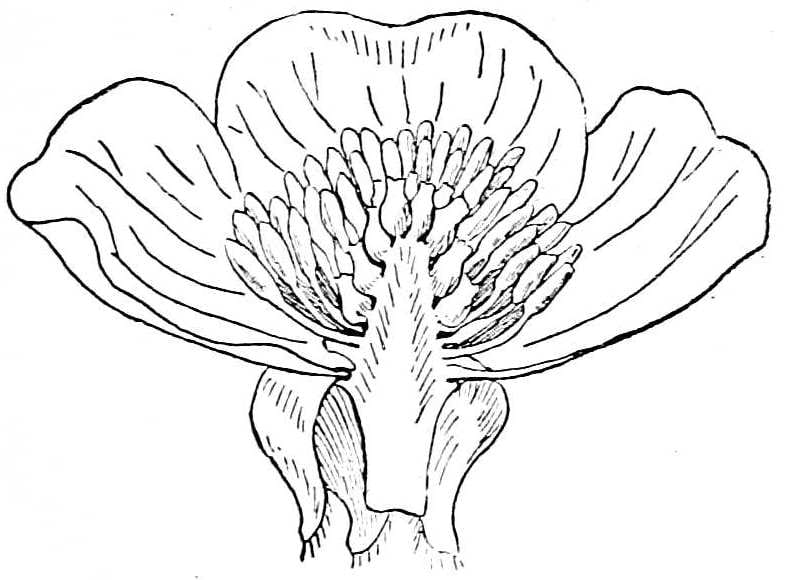
Here we see half of a buttercup. The buttercup has a great many entirely separate pistils. Look sharply at the picture, and you will see them crowded upon the little thimble-shaped object in the middle of the blossom. Do not confuse them with the stamens, for the buttercup has also a great many stamens. When buttercup time comes round, I want every one of you to look at these many pistils and stamens.
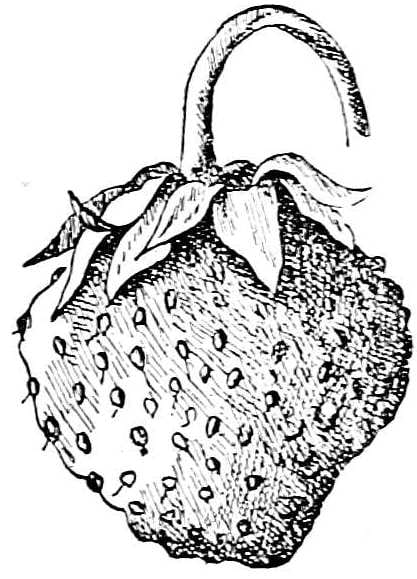
The next picture shows you a strawberry. In the strawberry blossom the pistils are so small, and so crowded, and so hidden by the many stamens, that it is not easy to see them; and so I show you the full-grown berry, with little pistils scattered all over its surface. Each of those tiny objects which stand out on the strawberry is a separate pistil.
Whenever you look at a flower, I want you to remember that its bright flower leaves will soon fade and fall, and that its stamens will lose their pollen and wither away, but that the pistil or pistils will remain, turning at last into the ripened fruit,—the fruit which is the end, the aim, the object, of the plant’s life.
